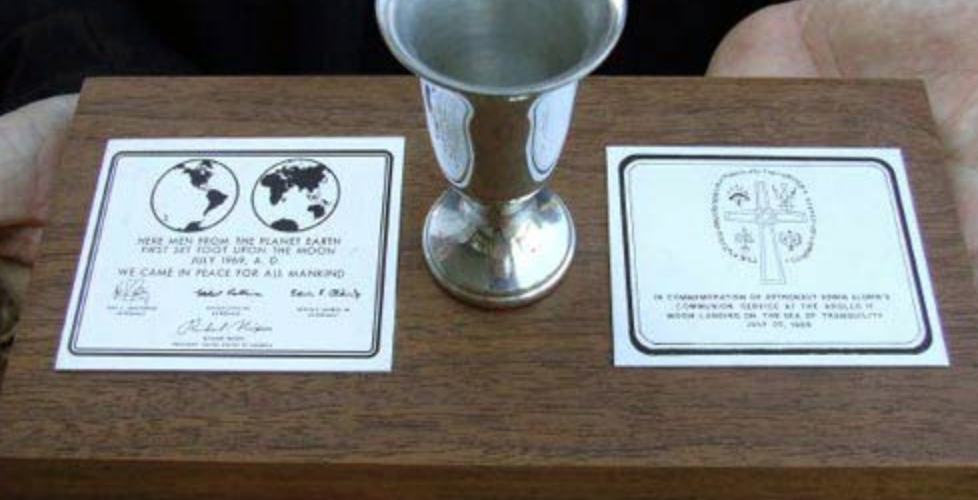DAVID’S QUESTION:
Do you know if it’s true Christian Communion was celebrated during the first moon landing?
THE RELIGION GUY’S ANSWER:
Yes, though this was top-secret at the time.
Something about such momentous events makes mere mortals reach for transcendent themes. For example, media coverage of last month’s 75th anniversary of the D-Day landing featured President Franklin Roosevelt’s famous radio address leading the nation and world in a prayer that God would bless the invading Allied soldiers in the “struggle to preserve our republic, our religion and our civilization.”
Astronaut “Buzz” Aldrin performed the Christian sacrament on the moon in 1969, and revealed this in a 1970 article for the inspirational magazine Guideposts that was picked up by other media (full text here). The Communion is mentioned in the official history posted online by NASA.
At the time of the moon adventure, Aldrin was a lay elder of the Webster (Texas) Presbyterian Church and discussed ways to mark such an historic event with his pastor, Dean Woodruff. Aldrin raised the idea of Communion and Woodruff checked with Presbyterian headquarters, which said under those unusual circumstances it was proper for a solitary layman to serve himself elements that had been consecrated previously. (While Catholicism allows priests to celebrate Mass by themselves, Protestants only perform sacraments or ordinances in group worship.)

Two Sundays before liftoff, Aldrin received Communion in a private worship service. Woodruff gave him a second bit of the bread and a tiny silver chalice containing some of the wine, which he included with the personal items the astronauts were allowed to take into space.
After the Eagle landed on the moon, Aldrin asked mission control for brief radio silence.
As Commander Neil Armstrong looked on, Aldrin read New Testament words of Jesus he had scrawled on a bit of paper: “I am the vine, you are the branches. Whoever remains in me, and I in him, will bear much fruit; for you can do nothing without me” (John 15:5). He then served himself the sacred bread and wine. Afterward, Armstrong walked on the moon, followed by Aldrin. (On July 20, do not forget the all-important third man, Michael Collins, who guided the module circling the moon that allowed the three to return alive to Earth.)
“It was interesting to think that the first liquid ever poured on the moon, and the first food eaten there, were the Christian Communion,” Aldrin reflected. “There are many of us in the NASA program who do trust that what we are doing is part of God’s eternal plan for man.”
In a later memoir he had second thoughts about commemoration with an explicitly Christian ritual, since the landing was a signal event for “all mankind — be they Christians, Jews, Muslims, animists, agnostics, or atheists.” But at the time he could think of no better way to acknowledge the “enormity” of the event “than by giving thanks to God.”
In later years, Aldrin was to work through alcohol abuse and clinical depression, and told The New York Times that instead of attending church “my Sunday mornings are spent in a recovery meeting.” But his former church in Texas holds a “Lunar Communion” service each year to remember the moon landing, and will do so again July 21. The service includes a replica of Aldrin’s chalice, the original of which is preserved in a bank vault.
The Communion on the moon followed a similar event seven months earlier during the first manned flight to the moon. The Apollo 8 mission did not land on the surface, but the astronauts transmitted a breathtaking live telecast while orbiting the moon.
Countless viewers were deeply moved that Christmas Eve when William Anders, Frank Borman, and James Lovell took turns reading the familiar account of God’s creation of the universe and planet Earth from Genesis 1:1-10 in the august King James translation.
Continue reading “Was Christian Communion celebrated during the moon landing 50 years ago?“, by Richard Ostling.











